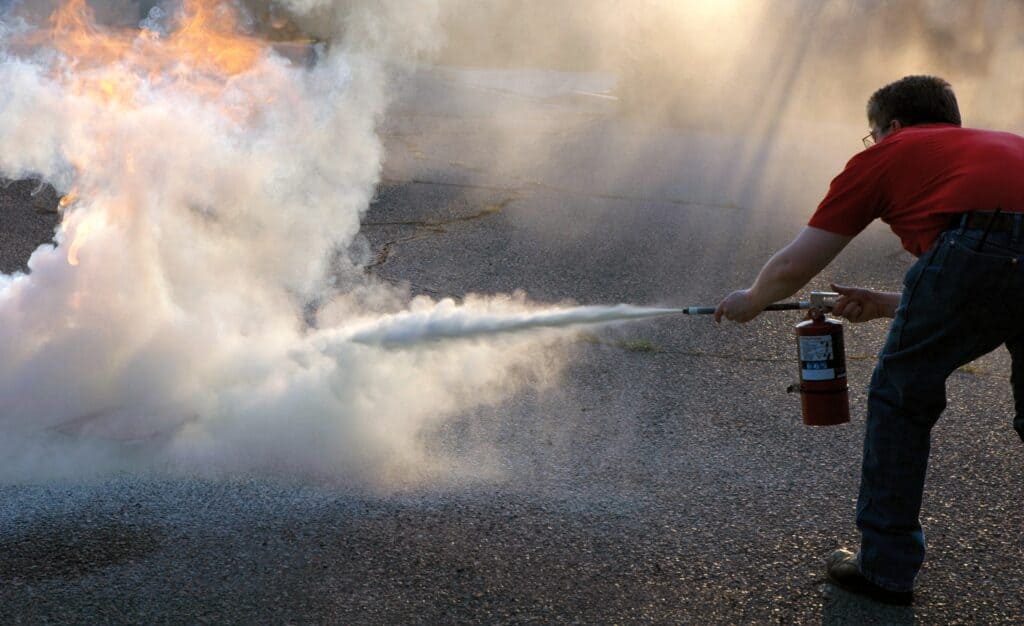School bus evacuation drills are essential for ensuring the safety and well-being of students during emergencies.
These drills teach students how to swiftly and safely leave the bus in the event of an accident or any other unforeseen incident.
Proper training and practice help students build confidence, enabling them to respond effectively during high-stress situations.
One key aspect of successful school bus evacuation drills is familiarizing students with the emergency equipment available on the school bus.
This includes knowing the location and proper usage of items such as fire extinguishers and first-aid kits, as well as understanding how to safely open and exit through emergency windows or doors.
Another crucial component is the guidance provided by bus drivers and school staff during these drills.
Their role is to instill a sense of calm and order during evacuations, ensuring that students follow established procedures.
Through regular training and practice, students can develop the skills needed to safely evacuate a school bus in a timely manner, potentially saving lives in real-life emergencies.
Importance of School Bus Evacuation Drills
Emergency Preparedness
One critical aspect of school bus safety is emergency preparedness. Regularly conducting school bus evacuation drills prepares children for potential emergencies while traveling to and from school.
Emergencies can arise from various situations such as traffic accidents, fires, or even natural disasters.
Familiarizing students with the evacuation procedure helps them react quickly and calmly when faced with a real-life crisis.
Moreover, these drills also serve as a tool to educate parents about the importance of school bus safety and encourage their active involvement.
Open communication between schools and parents is essential for ensuring the well-being of children during transportation.
Safe Evacuation
There are two types of school bus evacuations: immediate and orderly.
An immediate evacuation is necessary when there is imminent danger inside the bus, such as a fire or chemical spill.
In contrast, an orderly evacuation is more appropriate for non-life-threatening situations that require students and staff to exit the bus.
School bus evacuation drills focus on teaching students how to:
- Remain calm and composed during emergencies
- Activate emergency exits and escape hatches
- Form an organized evacuation line
- Assist younger or disabled passengers
- Exit the bus safely
In addition, these drills help school bus drivers to:
- Assess the situation quickly and make informed decisions
- Implement evacuation procedures efficiently
- Provide guidance and support for students during an emergency
By practicing evacuation drills, students and staff are better equipped to handle emergencies and ensure everyone’s safe exit from the bus.
Thus, conducting school bus evacuation drills is a crucial aspect of overall school safety measures.
Laws and Regulations
Legal Requirements
In some locations in the United States, school bus evacuation drills are required by law to ensure the safety of students in case of an emergency.
These drills typically involve practicing the use of emergency exits, fire extinguishers, and windows as means of escape, among other safety procedures.
Head Start agencies, for example, must perform at least three emergency vehicle evacuation drills per year, including one during the first week of the program year.
Role of School Districts
School districts play a crucial role in ensuring the safety of their students during transportation.
They are responsible for:
- Developing and implementing a comprehensive evacuation drill plan based on local and state regulations.
- Training school bus drivers and transportation personnel on the procedures and steps involved in a successful evacuation drill, if required.
- Maintaining communication with parents and guardians, informing them about the importance of evacuation drills and what they entail.
- Assessing and updating the evacuation drill plan on a regular basis to remain compliant with changing laws and regulations.
School districts may tailor their evacuation drill procedures to the specific needs of their students and the unique characteristics of their transportation fleet, while still adhering to the legal requirements and guidelines provided by their state.
In some cases, they may even exceed the minimum legal requirements to ensure optimal safety and preparedness for potential emergencies.
Evacuation Procedures
Steps for Bus Drivers
During a school bus evacuation drill, bus drivers play a crucial role in ensuring students’ safety.
They should follow these critical steps:
- Stop the bus: Choose a location that allows for a safe evacuation. Engage the parking brake, turn off the ignition, and remove the keys.
- Assess the situation: Determine the type and urgency of the emergency. Decide on the appropriate evacuation procedure (immediate or orderly) to apply.
- Communicate with students: Inform students about the emergency and provide clear instructions on the evacuation process.
- Assist with the evacuation: Open and secure the emergency exits. Help students disembark from the bus in an orderly fashion, prioritizing those with mobility issues.
- Account for all students: Conduct a headcount to ensure no one is left inside the bus. Report any missing students immediately.
Responsibilities of Students
During an emergency evacuation, students also have specific responsibilities to ensure a safe and successful procedure:
- Remain calm and listen to instructions: It is essential for students to stay composed and pay attention to the directions given by the bus driver or other school staff.
- Assist younger or disabled students: Older students or those without mobility issues should assist their peers who require additional help during the evacuation process.
- Follow designated evacuation routes: Students must adhere to the established evacuation routes for their particular bus and location, as shown in practice drills or communicated by the bus driver.
- Stay away from the bus after evacuation: After vacating the bus, students should move to a designated safe location and remain there until further instructions are given.
- Report any issues or concerns: If a student notices someone missing or encounters any problems during the evacuation, they should report it immediately to the bus driver or another staff member.
Overall, understanding and following the recommended steps and responsibilities during a school bus evacuation drill can help ensure that everyone involved remains safe and well-prepared for any emergency.
Addressing Evacuation Challenges
Students with Disabilities
Addressing evacuation challenges for students with disabilities is crucial for a successful school bus evacuation drill.
It is essential to assign designated helpers or support staff to assist these students during the evacuation process.
Having a thorough understanding of each student’s needs and capabilities will help in providing appropriate assistance.
For instance, some students may need extra time or a specific evacuation route to ensure their safety.
Bus drivers and school staff should be trained on how to handle wheelchairs, walkers, and other mobility aids in case of an emergency.
Additionally, communication tools such as visual aids or clear verbal instructions can help support students with hearing or visual impairments.
Weather Conditions
Weather conditions can create additional challenges during school bus evacuation drills.
Rain, snow, ice, or high winds can make it difficult for students to evacuate the bus safely and quickly.
To address these challenges, schools should take the following steps:
- Monitor weather conditions: Stay updated with the weather forecast and adjust the evacuation drill schedule accordingly to avoid severe weather conditions.
- Prepare for diverse situations: Ensure the evacuation plan includes weather-specific instructions, such as alternative evacuation routes or additional safety measures for slippery surfaces.
- Provide weather-appropriate clothing: Encourage students to wear weather-appropriate attire, including sturdy shoes, warm clothing, and rain gear. This will help reduce the risk of injury during adverse weather conditions.
Addressing evacuation challenges such as those faced by students with disabilities and varying weather conditions is essential for the success of school bus evacuation drills.
Being prepared and adaptable to various circumstances will help ensure the safety of every student on board the bus during emergencies.
Safety Equipment

Fire Extinguishers
Fire extinguishers are an essential piece of safety equipment in school buses.
They are used to control or extinguish small fires before they become a significant threat to passengers and property.
It is crucial that bus drivers are trained in using fire extinguishers and that these devices are regularly inspected and maintained.
First Aid Kits
Having a well-stocked first aid kit on board a school bus can significantly improve the outcome of potential injuries or medical emergencies.
First aid kits should contain essential items such as band-aids, gauze pads, adhesive tape, scissors, tweezers, and a variety of other medical supplies.
Bus drivers and staff should be trained in basic first aid procedures, and the kit should be routinely checked to ensure all items are up-to-date and in working order.
Seat Belt Cutters
Seat belt cutters are another vital piece of safety equipment on school buses.
In the event of a crash or emergency, passengers might become trapped by their seat belts, if equipped.
Seat belt cutters allow drivers and passengers to quickly and safely cut through the belt to facilitate a faster evacuation.
These tools should be easily accessible and located in multiple locations throughout the bus to ensure that they can be reached quickly when needed.
Frequently Asked Questions
How often should school bus evacuation drills be conducted?
School bus evacuation drills should be conducted on a regular basis to ensure that students and staff are prepared for emergencies.
The frequency of these drills may vary according to local regulations and school policies.
However, it’s recommended to conduct these drills at least twice per school year to keep safety procedures fresh in students’ minds.
What are the key steps in a school bus rear door evacuation?
A rear door evacuation usually involves the following steps:
- The driver instructs students to remain calm and stay seated until further instructions are given.
- Students sitting closest to the rear emergency exit are directed to open the door and assist others in safely evacuating.
- Students should evacuate the bus in an orderly manner, moving from the rear toward the front and exiting through the rear door.
- Once outside the bus, students should move a safe distance away, following the driver’s instructions.
What are the main elements of front-door bus evacuation?
Front door evacuation procedures are similar to rear door evacuations, but with students exiting from the front door of the bus.
Key steps include:
- The driver instructs students to remain calm and stay seated until directed to evacuate.
- Starting with the front row, students evacuate the bus in an orderly manner, with the driver providing guidance.
- Once outside, students move a safe distance away from the bus and follow the driver’s instructions.
Can you provide examples of reasons for mandatory school bus evacuations?
Mandatory evacuations may be required in situations like a fire on board, a chemical spill, or severe bus mechanical issues that pose a safety risk.
In these cases, an immediate evacuation is necessary to ensure the safety of the students and staff on the bus.
How does a school bus evacuation drill differ from a fire drill?
While both drills focus on evacuating a space, a school bus evacuation drill is specifically designed to prepare students for emergency situations on a school bus.
Fire drills, on the other hand, are focused on evacuating a building or school premises.
The specific procedures and exit routes differ depending on the location and type of emergency.
What is the role of the driver during evacuation drills?
The school bus driver plays a crucial role during evacuation drills, as they are responsible for:
- Assessing the situation and determining if evacuation is necessary.
- Communicating clearly and calmly with students, guiding them through the evacuation process.
- Ensuring that students follow the drill procedures and exit the bus in a safe and orderly manner.
- Leading the students to a safe location once outside the bus, maintaining control and conducting a headcount to ensure all students are accounted for.
Conclusion
It is essential that transportation departments take these drills seriously, as they are tasked with training and ensuring the safety of both staff and students.
Educating everyone involved in the safe and efficient evacuation of a school bus can ultimately save lives should a real emergency occur.
It is important for schools and transportation departments to periodically review and update their evacuation procedures, in order to ensure that they remain relevant and effective.
This ongoing evaluation will help in making certain that school bus evacuations are executed as efficiently and safely as possible.








